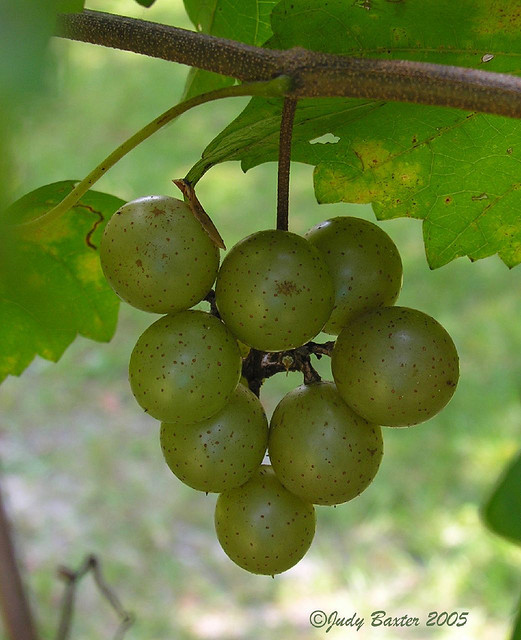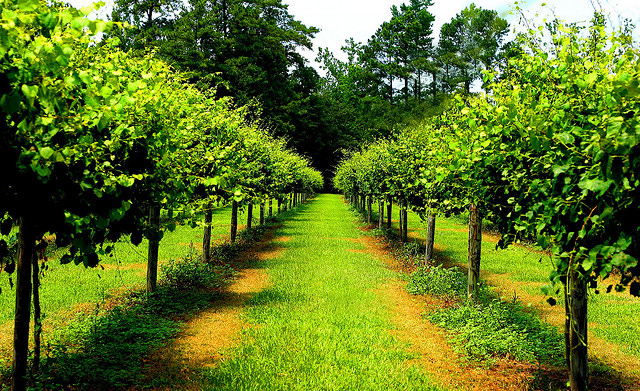Scuppernong grapes; photo by Judy Baxter (Old Shoe Woman) on Flickr (noncommercial use permitted with attribution / share alike).
Scuppernong Grape
North Carolina designated the Scuppernong grape as the official state fruit in 2001. A Scuppernong is a large variety of muscadine (a type of grape native to southeastern U.S.). The grape was named after the Scuppernong River of North Carolina, where it was first discovered. The word Scuppernong is from the Algonquian Indian word ascopo which means "sweet bay tree."
Scuppernong grapes are usually greenish or bronze in color, similar in appearance and texture to a white grape, but rounder and about 50% larger. The skin is very thick and tart and several small green seeds are found in each grape. The pulp is viscous and sweet and the seeds are bitter - the most desirable part of the scuppernong is the sweet juice.
From North Carolina State Library:
"The Scuppernong (vitis rotundifolia) has the distinction of being the first grape ever actively cultivated in the United States. It was named for the Scuppernong River, which runs from Washington County to the Albemarle Sound. Roanoke colonists are credited with discovering the Scuppernong “Mother Vineyard” (a vine that is now over 400 years old and covers half an acre).
Giovanni de Verrazano noticed this variety as far back as 1524, and explorers for Sir Walter Raleigh (sometimes spelled Ralegh) in the 1580’s sent back reports from the Outer Banks of grape vines that “…covered every shrub and climbed the tops of high cedars. In all the world, a similar abundance was not to be found.”
Grape cultivation (of scuppernong and other varieties) is a small but growing part of North Carolina's economy. According to a 2007 press release from Governor Easley's office, North Carolina is now ranked number ten in the nation for both grape and wine production, and the grape industry produces $813 million a year for the state's economy."


